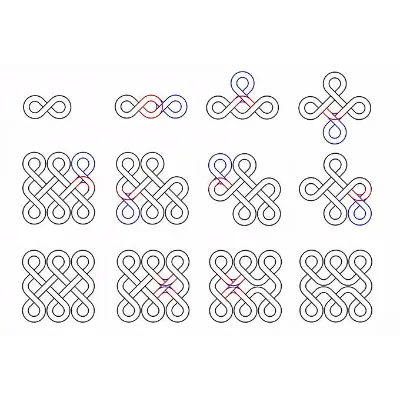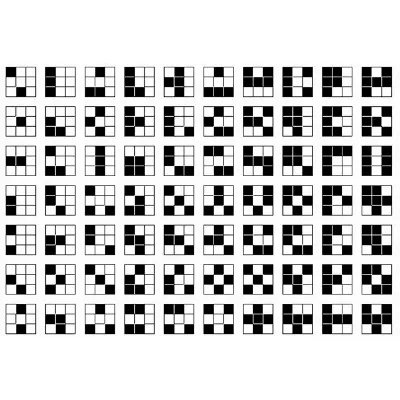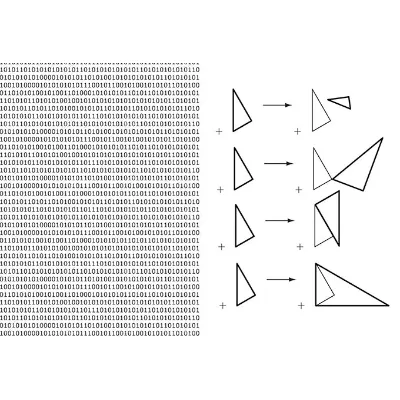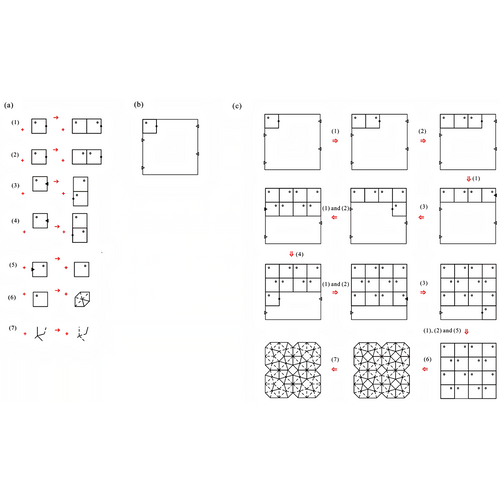Shape Grammars

ARCH 6508
Fall Semester
School of Architecture
College of DesignGeorgia Institute of Technology
Shape grammars is a powerful formal system for the generative description of designs. Their unique difference with all other generative systems is that they perform entirely visual computations rather than symbolic computations. Shape grammars are intended to form a basis for purely visual computation and in this sense they belong in the heart of design education and practice – both in precedent analysis and in a studio setting.
The course discusses the foundations of shape grammar formalism, provides a constructive understanding of the formalism through hands-on workshops and offers a generous overview of the history and logic of several of its applications in design research. A particular focus is given on a systematic exposition of basic rule schemata and the ways they are ordered and combined in sums and products to produce a compositional taxonomy of design.
The course is open to Ph.D, MS. Arch, and M.Arch students. BS. Arch students and students from other departments and schools at Georgia Tech can take it with a special permit.
Links
Architectonics

ARCH 6508
Spring Semester
School of Architecture
College of Design
Georgia Institute of Technology
The subject of architectural design and mathematics is one of the most pervading and perplexing topics in architecture discourse. This series of lectures looks at various ways mathematics has been used historically to describe, interpret and evaluate spatial composition and design.
The class is divided in three parts: The first part lays the foundations for the course with the reworking of the earliest account of design and mathematics in architectural discourse in Vitruvius’ De Architectura. The three well-known, and still useful, prerequisites of architectural form, firmness, commodity and delight, are juxtaposed with the six principles of architectural design to provide a theoretical framework for the inquiry of formal composition. The second part focuses on symmetry and proportion, the most important elements of Vitruvius’ theory of design, and traces their intellectual trajectories within the body of architecture discourse starting from Greek architecture to Alberti and to contemporary designs. The third part expands upon the relation of new mathematics to contemporary discourse and especially in recursive formalisms for generative design.
The mathematical discourse is drawn from selected topics in discrete mathematics and history of mathematics including Pythagorean arithmetic, proportionality, figurative numbers, group theory, Polya’s enumeration theorem, and production systems, in particular, shape grammars.
Links
Digital/Analog Computation

ARCH 6501
Fall/Spring Semester
School of Architecture
College of Design
Georgia Institute of Technology
Representational systems in architectural design are broadly conceived in terms of visual and symbolic notational systems. Their affinities and differences to autographic and allographic representational systems and to digital and analog systems of representation respectively is traced through a series of readings that take on akin ideas in other fields including art, philosophy, history and philosophy of science, linguistics and psychology, literature and literary studies, logic and mathematics, and artificial intelligence.
The course is open to M.Arch, MS.Arch and PhD students with an interest in formal (spatial / mathematical) analysis and composition. Undergraduate students can take the class with a special permit.
Links
Shape Machine Applictions (MM3 Elective)

ARCH 7030/8833 | ID 8803 | CS 8803
ARCH 4833 | CS 4803 (Undergraduate offering)
Spring 2025
Athanassios Economou, PhD
School of Architecture, College of Design, Georgia Institute of Technology
A project-based course using the Shape Machine, a new shape-rewrite modeling technology developed at the Shape Computation Lab at the College of Design at Georgia Tech. The software implementation of vector-based shape computations using shape queries (⌘F) and shape replacements (⌘R) with control flow mechanisms including loops and conditionals provides a completely new approach in coding enabling new workflows in design, mechanical engineering, electrical engineering, robotics, and akin fields relying on CAD/CAM models. Typical applications explored in the course include product specification, layout generation, test fits, LOD specifications, code checking, quantity takeoffs (QTOs), CAD shape mining, among others.
The class consists of three modules: The first module, DrawScript, provides a straightforward introduction to the programing interface of Shape Machine for Rhino and explores its similarities and differences with the current state of the art of parametric and generative systems in design and akin fields including architecture, engineering and the arts. The second module, AI in Design, looks at the interface of Shape Machine with AI models, agent-based models, and decision-making models including shape annealing, Monte Carlo methods, heuristics, game theory, evolutionary programming, more – and all in relation to shape scripting. The third module, Edifice, builds on the lessons learned and the technology developed during the first two modules and focuses on the refinement and execution of the semester-long project.
Students are expected to do a workshop in Shape Machine (20 points), one presentation on assigned readings (20 points), and three presentations of a semester-long project (3*20 points = 60).

